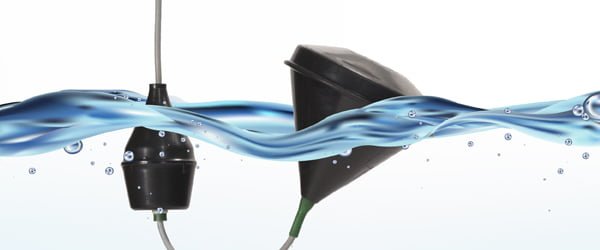 We’re glad to help you out no matter what terminology you’re used to. So feel free to call and ask for a dohicky that has floats on a stick, or a dongle lookin’ thing that switches when the water rises. But, if you feel like you’d rather brush up on some vocab, the following list just might be helpful.
We’re glad to help you out no matter what terminology you’re used to. So feel free to call and ask for a dohicky that has floats on a stick, or a dongle lookin’ thing that switches when the water rises. But, if you feel like you’d rather brush up on some vocab, the following list just might be helpful.
Here are some of the more common terms seen in float switch discussions.
- Switch Point: The point or level of activation of a switch.
- Switching Differential: The distance between switch points.
- Cable Suspended Float Switch: A float switch that is suspended from a cable and activates internal switch points as the liquid level changes the angle of the float as it rises and falls.
- Stem or Probe Float Switch: A float switch that is mounted on a rod.
- Normally Open Contact: When the float switch point is at rest in the circuit, it is de-energized or not active.
- Normally Closed Contact: When the float switch point is at rest in the circuit, it is energized or active.
- Single Pole Single Throw: The simplest of switches. A basic on-off switch.
- Single Pole Double Throw: Also known as a changeover switch, a single switch point with two contacts. The common wire is connected to two switch points.
- Relay (often called a Contactor): Common in float switch applications. An electrically operated switch used in conjunction with high voltages or current.
- Common: Used to connect several circuits to a common electrical path. Shown usually as a common wire.
- Excitation Voltage: Voltage needed to operate the float switch
- Ground Wire: Used to refer to the reference point of an electrical circuit.
- Hysteresis: Delay in actuation between switch points.
Example: A low level float switch point is energized and the pump will start filling the tank with liquid. When the liquid reaches the full level, the second float switch point will cause the pump to turn off. The pump will stay off until the liquid falls back to the low level point where the process will repeat.
This delay of the pump until the liquid falls to the low level is hysteresis.
- AC Power: Alternating current that switches directions, also known as house current. Common ranges for float switch applications are 100-250 VAC.
- DC Power: Direct current: Found in power sources such as batteries. Common ranges for float switch applications are 12-24 VDC.
- Conductor: In float switch applications, wires in a cable that are used to connect the switch points.
Let us know if you have any questions, such as “How many switch points can in get in a single cable suspended float switch, and what are the switching differentials?” Or “Can I get a probe float switch with seven float switches with built in hysteresis that share a single common?” We’ll even accept, “What is a float switch and how can I get one?”

 We’re glad to help you out no matter what terminology you’re used to. So feel free to call and ask for a dohicky that has floats on a stick, or a dongle lookin’ thing that switches when the water rises. But, if you feel like you’d rather brush up on some vocab, the following list just might be helpful.
We’re glad to help you out no matter what terminology you’re used to. So feel free to call and ask for a dohicky that has floats on a stick, or a dongle lookin’ thing that switches when the water rises. But, if you feel like you’d rather brush up on some vocab, the following list just might be helpful.